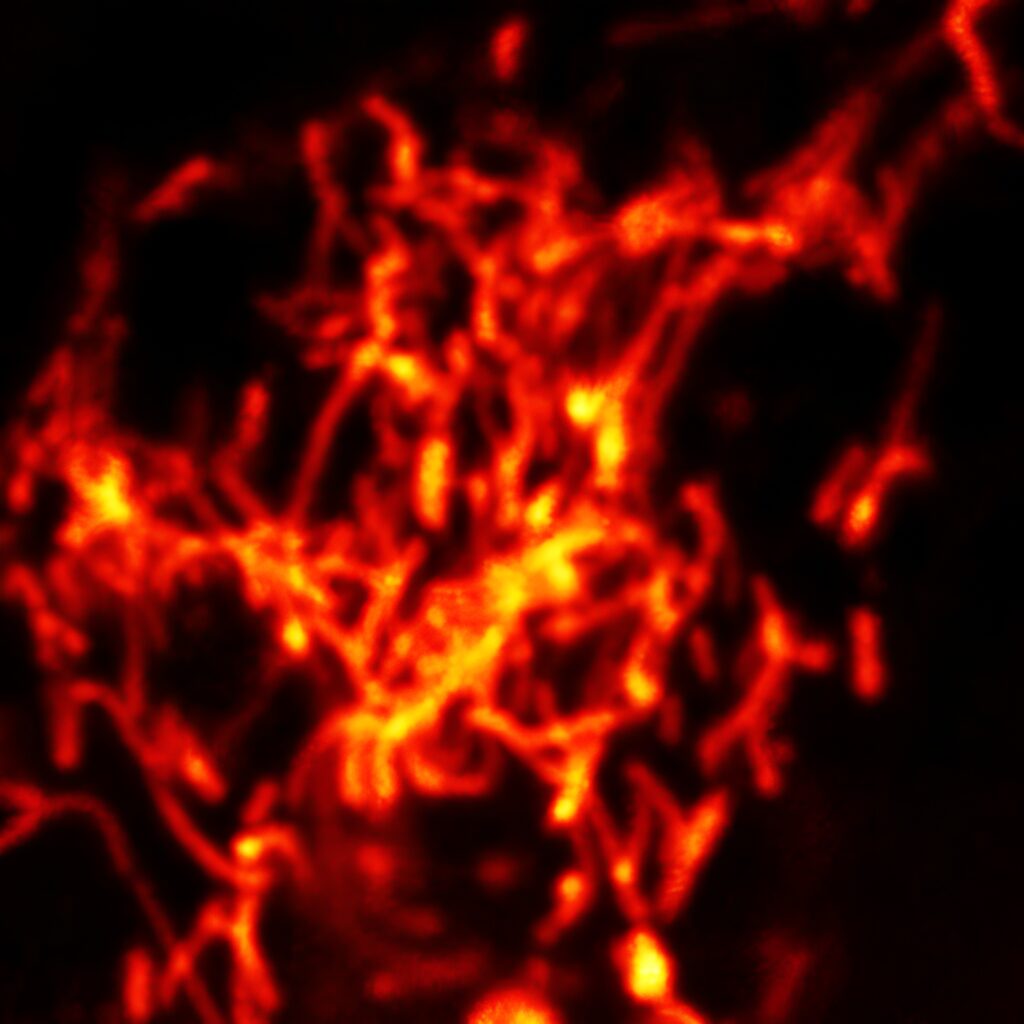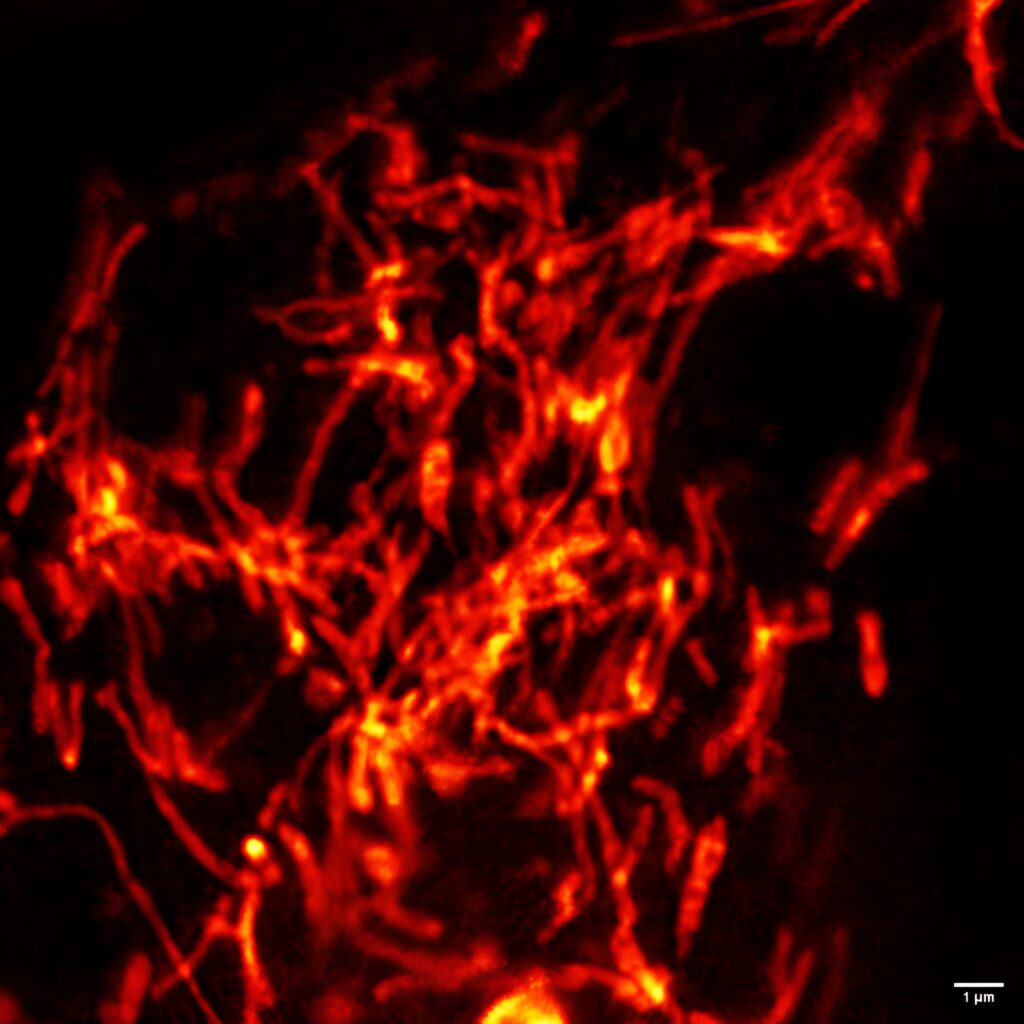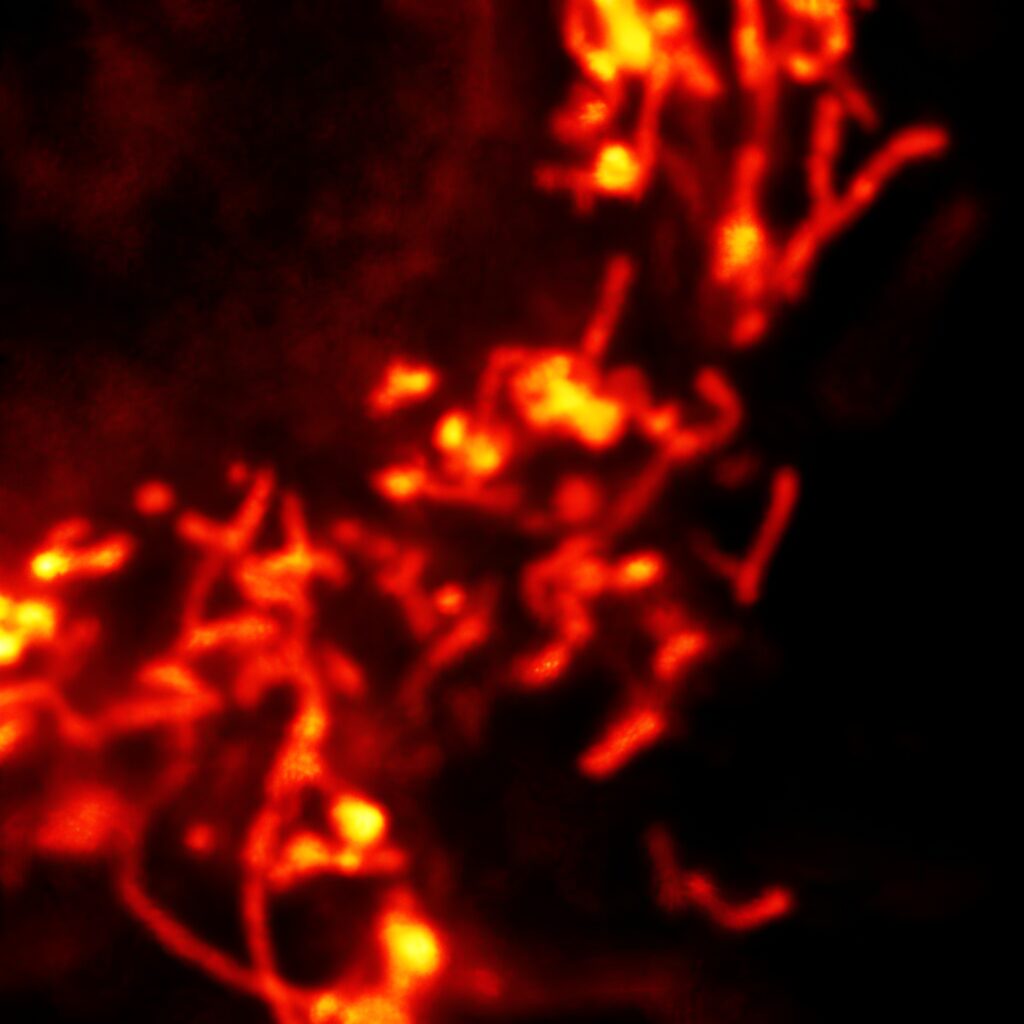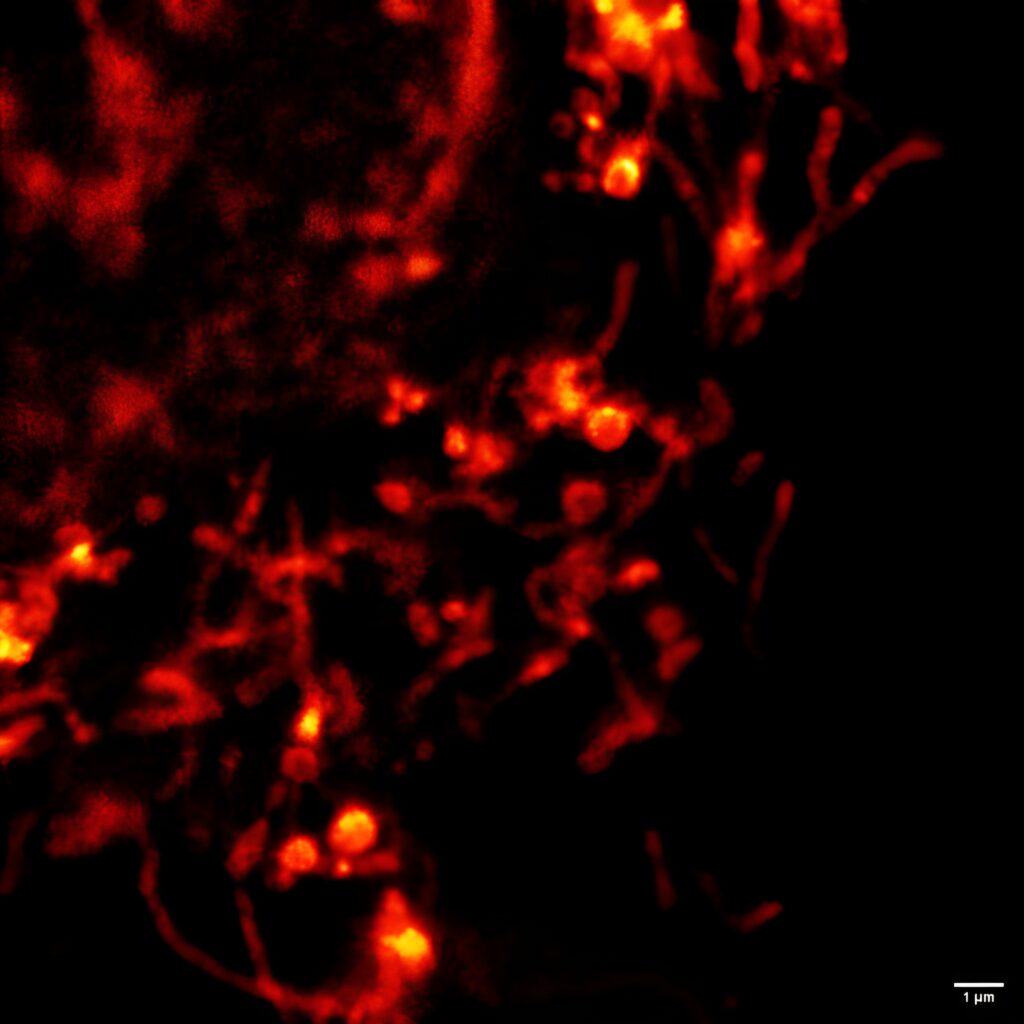Phone
+33 (0)1 76 54 08 64
Address
66 avenue des Champs-Élysées
75008 Paris – France
STED (stimulated emission depletion) microscopy offers several advantages over confocal microscopy:
STED microscopy provides unique advantages for high-resolution imaging with improved contrast and faster acquisition.
Input of STED nanoscopy on living animal cells labeled with 2 µg/µl of LBL-Dye Mito715.
Confocal (left) and STED (right) (20% power of 775-nm depletion laser) imaging.
Confocal

STED



Product citations :
The efficacy of fluorescence-guided surgery in facilitating the real-time delineation of tumours depends on the optical contrast of tumour tissue over healthy tissue. Here we show that CJ215—a commercially available, renally cleared carbocyanine dye sensitive to apoptosis, and with an absorption and emission spectra suitable for near-infrared fluorescence imaging (wavelengths of 650–900 nm) and shortwave infrared (SWIR) fluorescence imaging (900–1,700 nm)—can facilitate fluorescence-guided tumour screening, tumour resection and the assessment of wound healing...
The nuclear receptor, Nurr1, is critical for both the development and maintenance of midbrain dopamine neurons, representing a promising molecular target for Parkinson’s disease (PD)...
Cell-to-cell communication via tunneling nanotubes (TNTs) is a challenging topic with a growing interest. In this work, we proposed several innovative tools that use red/near-infrared dye labeling and employ lifetime-based imaging strategies to investigate the dynamics of TNTs in a living mesothelial H28 cell line that exhibits spontaneously TNT1 and TNT2 subtypes...
Proimaging